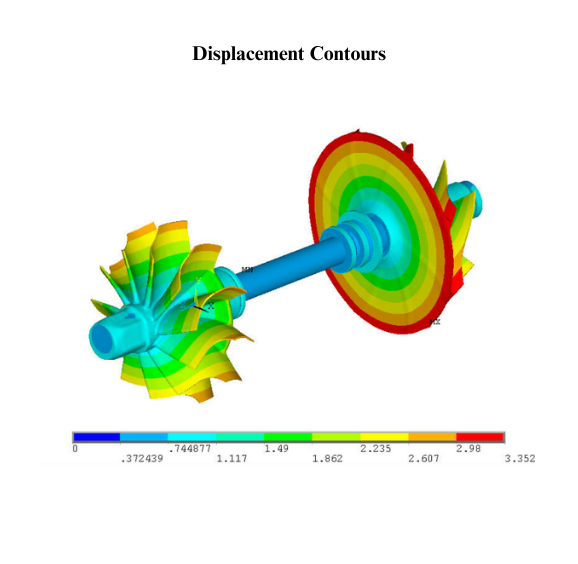INTRODUCTION
Finite Element Analysis (FEA) has been extensively used by the automotive industry in recent times. It is mainly due to the fact that the timescale between concept and prototype development has been reduced to 18 months in certain cases. For a product or model to succeed in the market, reduced lead time with high quality and reliability is the need of the hour, along with various other influencing factors. This is achieved using FEA by virtually predicting the vehicle’s response during primitive design and modifying the design before physically validating it through testing.
Our expertise could assist you with
- Fluid-Structure Interaction
- Structural/Model/Harmonic Analysis
- Body in White (BIW): Analysis
- Reducing the risk of creep and fracture
Other Areas
- New Product Development Engineering ; Analysis
- 2D to 3D conversion
- Multi-body dynamics (MBD)
Vibration Analysis of the Brake Disc
Optimization of the automotive braking system is necessary as there is a flood of vehicles occupying our world nowadays. When it comes to passenger safety, the vehicle’s braking system is first and foremost. So, the braking system should be safer, more durable, and affordable.
As it undergoes the worst circumstances, modal and harmonic response analyses are carried out to assess its natural frequency and non-linear structural behaviour at a given frequency range, along with its braking force applied over the disc, respectively.
Analysis of the Brake Disc
Frictional force is applied to the rotating member of the brake either to stop the vehicle’s motion or to reduce its speed. The resulting potential energy due to frictional force will dissipate as heat energy. The thermal analysis module within FEA helps to find out the temperature data over the disc while braking and the time taken by the disc to reach the atmospheric temperature by natural convection after brakes are released.

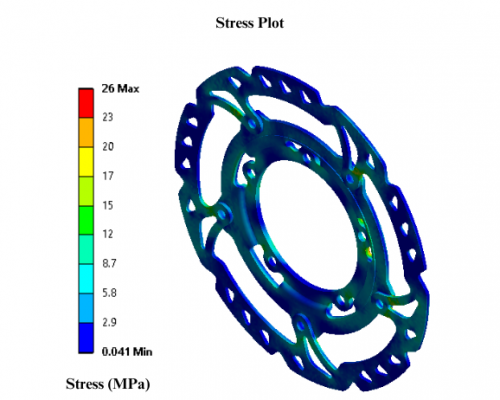
Structural Analysis of the Spring Suspension System
When it comes to travel, comfort will be the prerequisite for every passenger, and the vehicle’s suspension system will take charge. The suspension system of a vehicle protects the vehicle and its passengers from shock loads transmitted from humps and bumps on a rough path. Several studies are in progress to completely eliminate the impact transferred to the passenger cabin.
The suspension system has to be robust to bear the torque and braking reactions, reduce the stress and strain on various components, and reduce the impact due to road humps. FEA can be utilized at the early stages of the design assessment and development process of suspension systems and their components, in order to make a safer, reliable and better design.

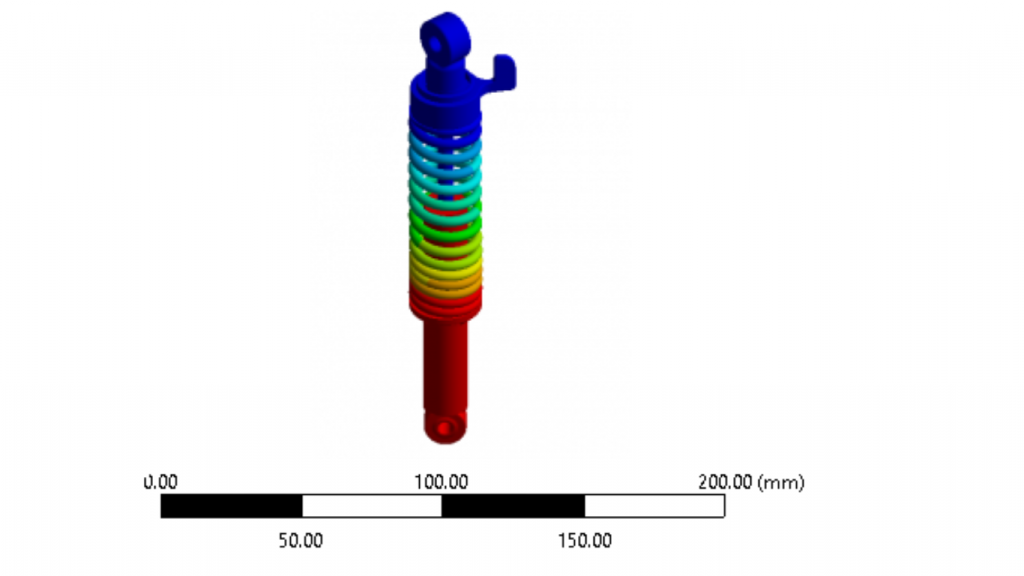
Crash Analysis of a Car Exterior
The use of FEA is vast within the areas of automotive domain, such as in BIW component analysis, light-weight chassis design, optimized material distribution, affordable material selection, crash box design, structural stability, load transfer during a crash, etc.
Passenger safety during a crash is an important certification criteria for any passenger carrying road vehicle. Significant costs are involved in conducting crash tests and certification processes, for which the automotive industry needs alternate cost-effective and reliable techniques for faster validation of their designs w.r.t crash safety index. FEA is one such cost-effective tool that helps in achieving the aforesaid objectives. Through FEA, we can perform various crash test scenarios like full frontal collision, 40% offset, rear collision, side collision, crash between cars, etc., as per the norms of Global NCAP, IIHS, etc. These analyses can predict the response of a product prior to real-life testing.
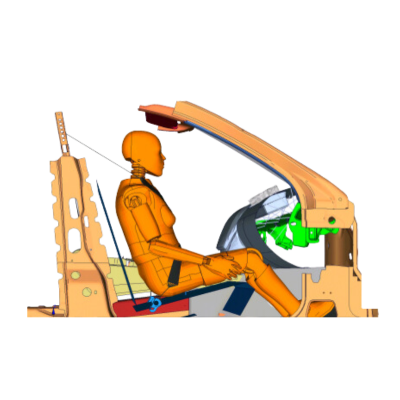
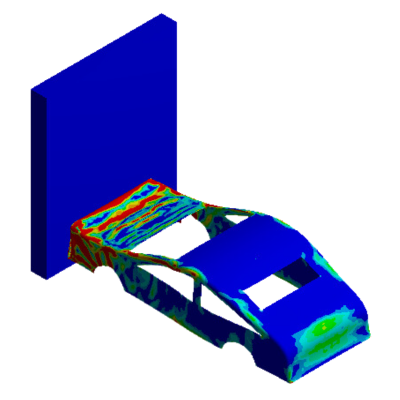
Thermo-Mechanical Analysis of the Turbo-Charger Rotor
The turbine and compressor are the core components of a turbocharger. In the evolution of automotive technology, turbochargers came into the picture as a way of increasing the fuel efficiency of an engine. FEA is carried out to complete the preliminary design check of a turbocharger (both turbine and compressor unit) by predicting the temperature and resulting deformation.
